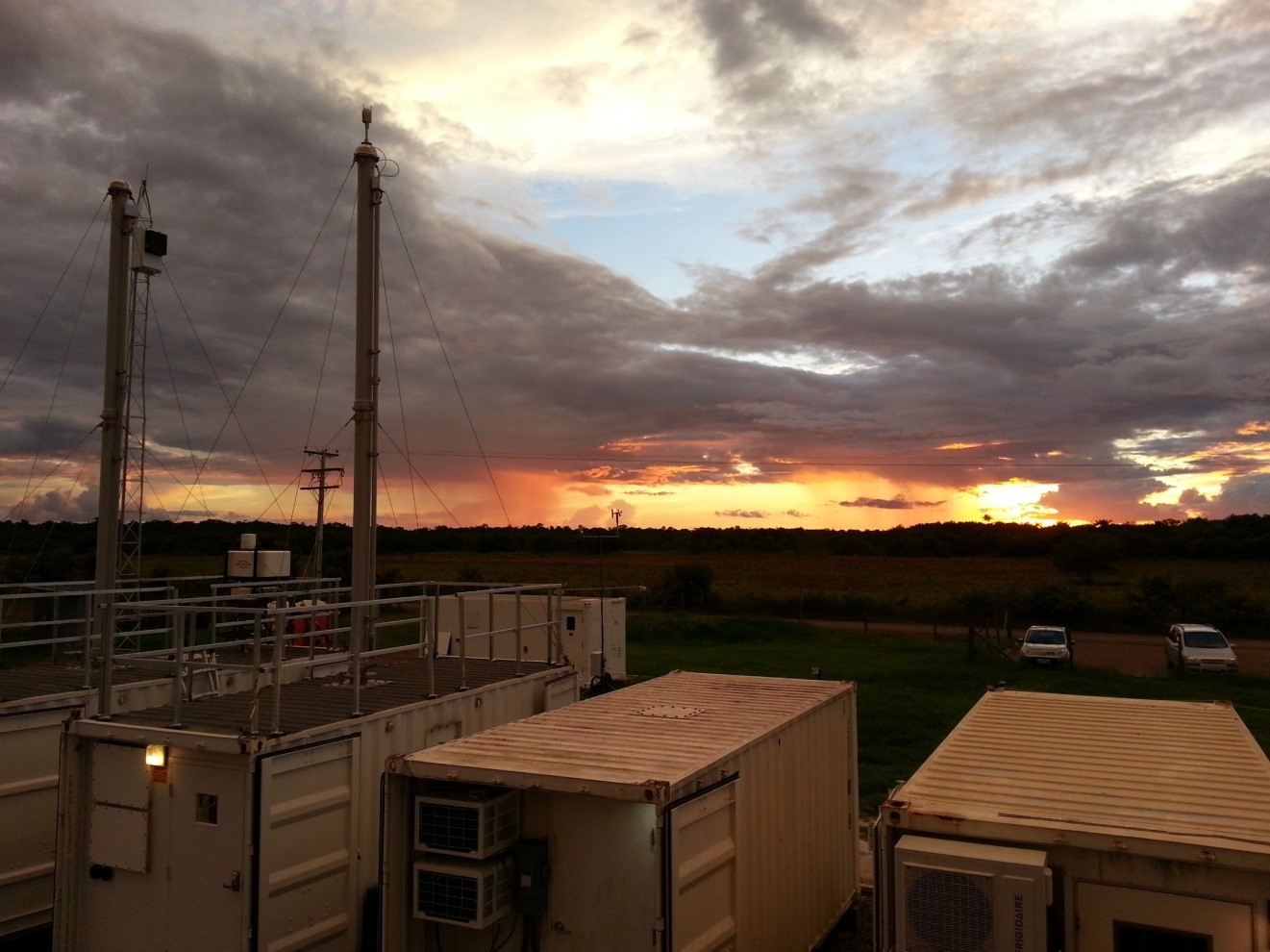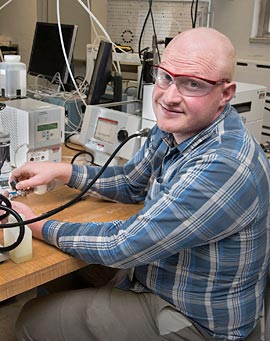Brookhaven Researchers Verify Aerosol Observation System Inlet Transmission Efficiency
Published: 19 August 2017
You’ve Got to Know Your Losses

ARM recently published a report detailing how a team of scientists and engineers at Brookhaven National Laboratory (BNL) empirically verified older theoretical characterization studies of aerosol particle losses within sampling systems like the Aerosol Observing System (AOS).
The team comprised Chongai Kuang, Robert Bullard, Janek Uin, Scott Smith, and Steven Springston. Overseen by Kuang, Bullard, a scientific associate at BNL, led the science side of the experiment while Smith, an environmental associate at BNL looked after technical aspects.
Their challenge: to find out how accurate widely accepted previous characterizations based solely on modeling and fluid dynamics really were. This was a big ask for two reasons: only an organization like the ARM Facility with a depth and breadth of instrumentation could do it, and particle losses had to be measured at two points in the inlet system simultaneously—one of those points being at the top of a 10-meter inlet stack.
The issue at stake is simple. As atmospheric air is drawn into the inlet, aerosol particles can be ‘lost’ if they fall out of the air flow or stick to the side of the tubes before being sampled by an instrument. Such losses produce inaccurate measurements. The trick is calculating the losses in order to allow for them.
Bullard notes: “I ran a long-term study in graduate school that sampled from a similar inlet. I applied the same model-based loss calculations that everyone uses and I remember wondering if they had ever been tested against reality. To our knowledge, they hadn’t been. We set out to change that.”

Tubular, Dude!
AOS systems have been carefully designed to minimize losses in a large range of particle sizes. Losses in small particles are reduced by drawing a large flow volume of air to minimize residence time in the tubing.
Losses in large particles are reduced by eliminating sharp turns. These losses cause instrument readings to be slightly lower than the actual concentration in the atmosphere.
A large-diameter inlet pipe (20 centimeters) and a strong blower take care of the large flow volume of air and a small-diameter (4.7 centimeters) inlet core extractor samples the center of the flow to ensure a representative sample.
The Big Sniff
The team planned their experiment and set to work in early 2016, completing their testing in on-and-off stretches over two months. For a testbed, they used the third AOS built at BNL and now deployed at Oliktok Point, Alaska. The experiment was conducted outdoors, so weather became an issue at times.
Three sets of duplicate instruments were deployed: scanning mobility particle sizers (SMPS), aerodynamic particle sizers (APS), and ultra-high-sensitivity aerosol spectrometers (UHSAS). Smith set these up, bent the tubing to feed them, and did the tricky rigging to hang instruments at the top of the (very tall) stack.
“Let me just say that ten meters is a long way from the ground,” he points out. “You notice that right away.”

As ambient air enters the inlet, it passes through a rain guard and bug screen, the large-diameter tubing, the inlet core extractor, and a flow distributor with five exit ports leading to the instruments. The process is akin to a car’s engine sucking in air to feed the carburetor, which then sends the fuel mixture through an intake manifold to the cylinders’ combustion chambers.
To quantify the distributor system’s efficiency, the experimenters tested it at both ends, placing the two sets of instruments in the ambient air just outside the inlet on the stack and at the exit of the flow distribution ports.
A World First
The results of the experiment showed good agreement with model predictions within the uncertainty limit. Large particles were few and far between during the study period, causing large uncertainties in the upper size ranges. Follow-up work would require longer sampling times or sampling in an environment with more signal at larger sizes.
For now, ARM considers this experiment a win. The team will now focus on distributing the results to the wider scientific community through a peer-reviewed journal.
The ARM Climate Research Facility is a DOE Office of Science user facility. The ARM Facility is operated by nine DOE national laboratories, including Brookhaven National Laboratory.
Keep up with the Atmospheric Observer
Updates on ARM news, events, and opportunities delivered to your inbox
ARM User Profile
ARM welcomes users from all institutions and nations. A free ARM user account is needed to access ARM data.


















